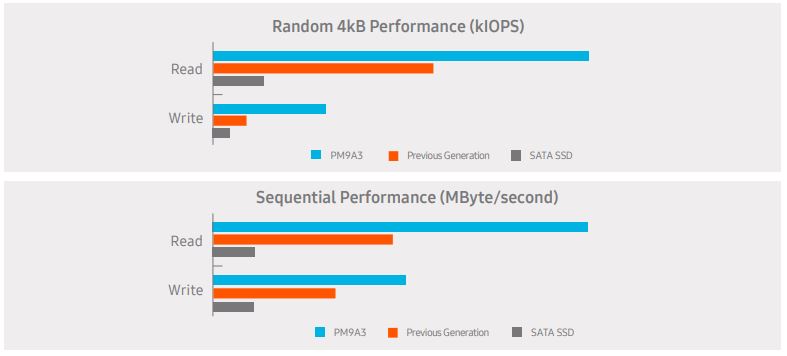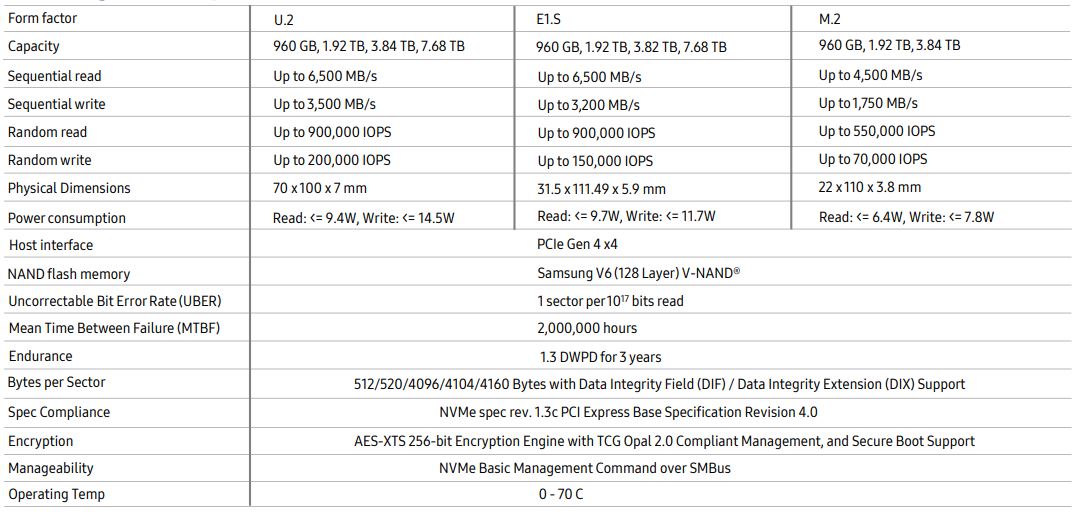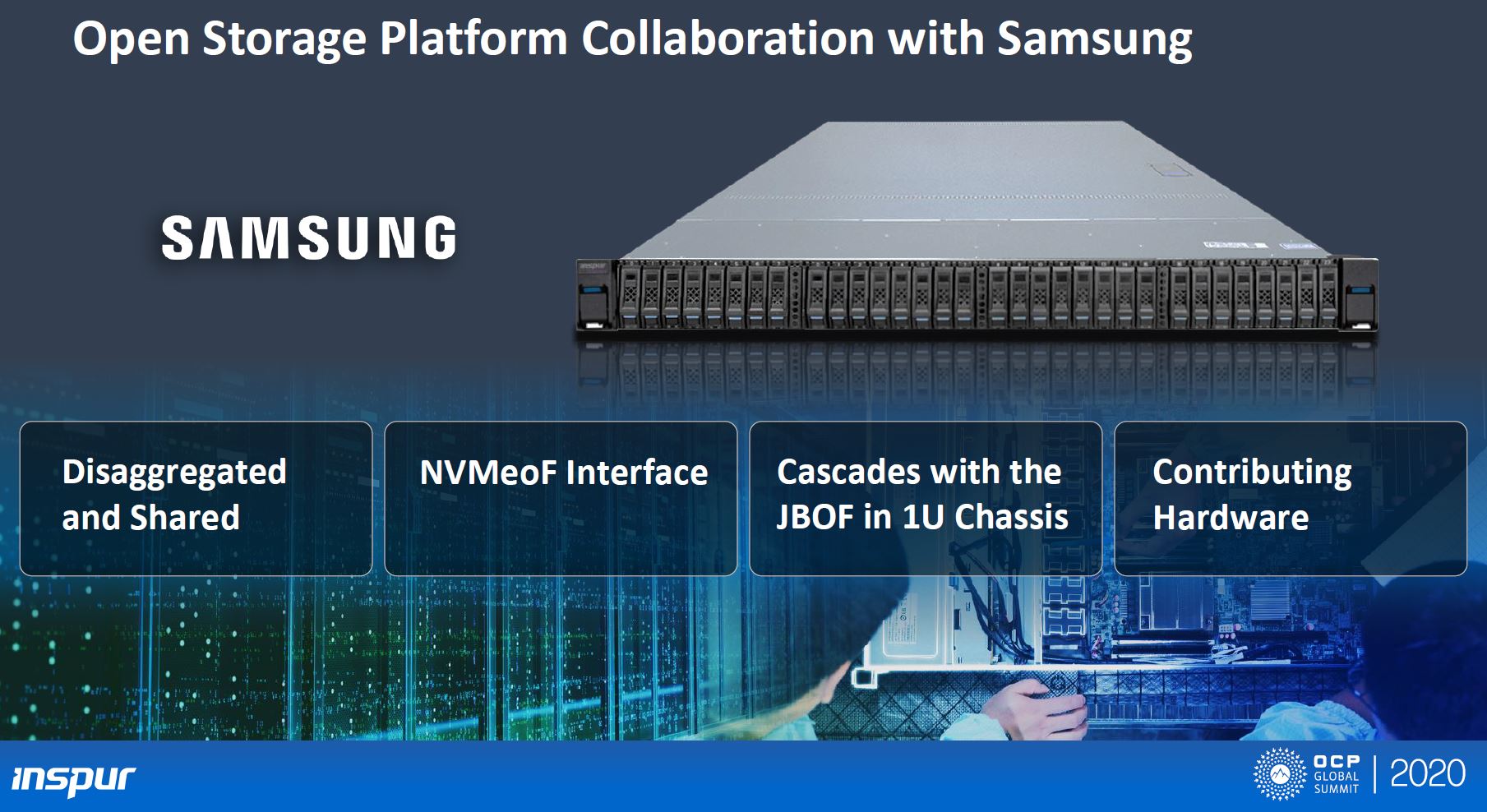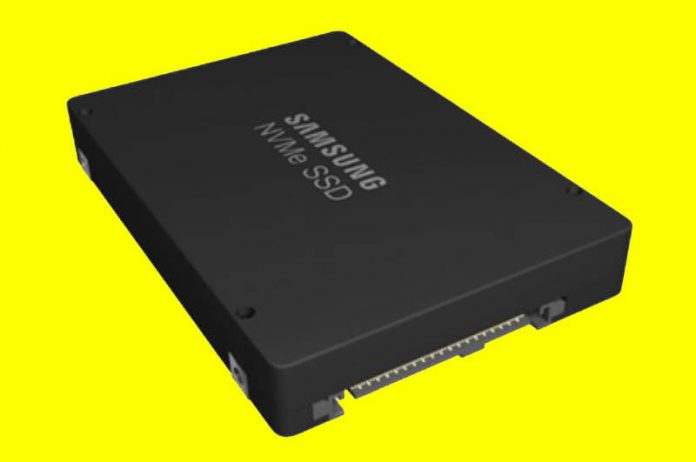Samsung is releasing new NVMe SSDs designed for the next-era of servers. The Samsung PM9A3 offers more performance based on PCIe Gen4. Samsung is creating SSDs that span a range of form factors including M.2, U.2, and E1.S. This is now the most complete PCIe Gen4 NVMe SSD portfolio on the market.
Samsung PM9A3 PCIe Gen4 NVMe Data Center SSDs
The Samsung PM9A3 PCIe Gen4 SSDs offer a few key benefits over the PCIe Gen3 versions. They mostly boil down to speed. With PCIe Gen4 offering twice the bandwidth, one can get enormous performance gains across sequential and random 4K IOPS.

Here is the SKU stack, performance claims, features, and endurance ratings for the PM9A3:

Samsung is ranging from 960GB at the low-end of capacities up to 7.68TB for U.2 and E1.S along with up to 3.84TB for the M.2 version. The drives feature Samsung V6 128-layer V-NAND and have 3-year 1.3 DWPD ratings.
Samsung and Inspur have collaborated to bring the E1.S to a design that will be contributed to OCP. This 1U system brings 32x E1.S SSDs to a single system. As one can imagine, 32x Samsung PM9A3 SSDs per U brings a lot of density and performance to the market. The initial offering will offer up to 256TB per 1U of rack space.

That Inspur 1U E1.S server hardware and Samsung solution is part of what Samsung is basing its Project Poseidon on. Project Poseidon is Samsung’s effort for disaggregated storage designed for cloud service providers as well as the broader market. Samsung’s goal is to provide a flexible and high-performance disaggregated platform and the PM9A3 is a building block of the initial solution.
Final Words
We have the Kioxia CM6/ CD6 in the lab for testing and they appear as though they are faster than what Samsung is announcing. On the other hand, the Kioxia PCIe Gen4 offerings are U.3 only while Samsung is announcing a line across M.2, U.2, and even E1.S for higher density applications. While Kioxia’s PCIe Gen4 offerings are focused on enabling Broadcom’s last-ditch efforts to support SAS and NVMe, Samsung is focused on providing different NVMe-focused form factors. Intel for its part is stuck timing its PCIe Gen4 drives with PCIe Gen4 chips and Ice Lake Xeon generations. As a result, the market is open for Samsung and others to develop solutions such as the PM9A3 to address the growing PCIe Gen4 market while Intel waits for Gen4.





these SSDs should fit well with epyc rome servers natively proposing pcie gen 4 without extra chipset.
We are waiting impationatly for u.3 drives for our hpe dl385 gen10 plus Servers. Hope they are vsan approved soon!
A comment 3 years later! I’ve got an old p9x79-e ws (pcie 3.0) which I’m using as a Proxmox server. I’d like to add 2x m.2 PM9A3 960GB (ZFS mirror) for VMs. Although they are pcie 4.0, they are readily available and I can take advantage of the endurance and power protection features. Also I can move then to a pcie 4.0 motherboard later on. I know I won’t get the speeds but would this work? Many thanks.